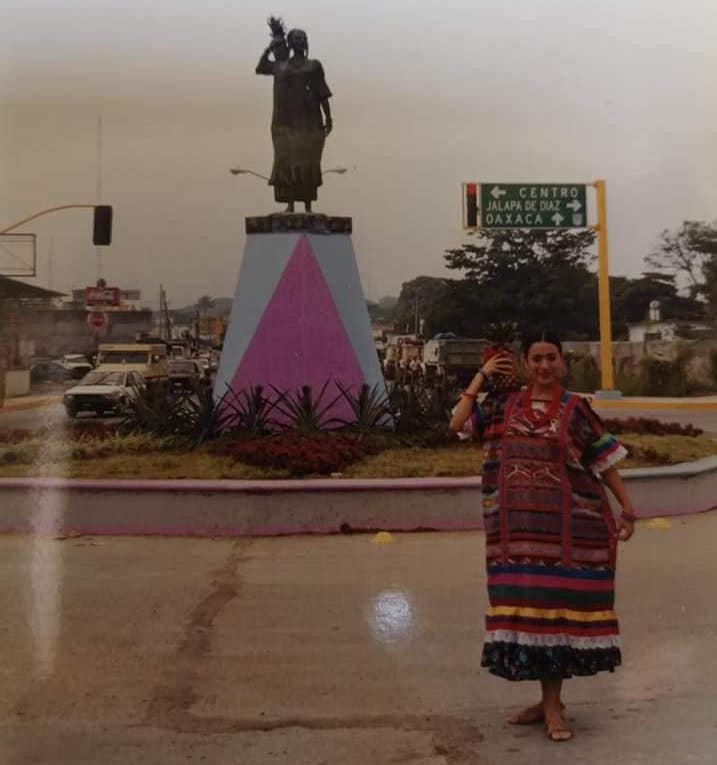Guelaguetza means offering in Zapotec and the annual festivities of the Guelaguetza in the city of Oaxaca aim to show and “offer” the products of each region of Oaxaca. The “Flor de Piña” dance represents the region of the Papaloapan and it is a relatively new dance. It was created in 1958 to represent the Papaloapan region.
Previous to the folk dance “Flor de Piña”, the typical folk dances in Tuxtepec were the Son and the Fandango, even “La Bamba” was very popular, which identified the Oaxacan-Papaloapan region as a culture from the neighbouring state of Veracruz. Due to the remoteness of the Papaloapan basin and the isolation (many mountains in between) with the Oaxacan capital, these folk dances were not very much appreciated. That is why the Governor of Oaxaca in that time ordered the creation of a new dance, one that was “more Oaxacan” to participate in the Guelaguetza. So, the folk dance “Flor de Piña” was born.
This unilateral decision of imposing a new folk dance to the population of the Papaloapan region, ignoring a part of their cultural identity was not well received by many. In fact, the Papaloapan region belongs to the Sotavento culture that encompasses the entire southern part of Veracruz and part of Oaxaca (where Tuxtepec is) and Tabasco. Although a part of society (especially the older ones) still does not fully accept this imposed dance that seems strange to them, the majority of Tuxtepecans and Cuenqueños have assimilated it as part of their cultural identity. As one of the most anticipated dances of the Guelaguetza and the only one that is presented each year on the two Mondays on the hill, it accelerated its acceptance by the inhabitants of the Papaloapan region.
The task to present a new dance at the festivities of the Guelaguetza was not easy. First the pineapple was chosen as the typical product of the region. The costumes were inspired by the huipiles of each indigenous community in the Chinantla. Finally, the dance and the music were designed and that is how the Flor de Piña folk dance came alive. The dance was quickly adopted by the following generations of Tuxtepecans and the entire Chinantla region.
A monument to Flor de Piña was erected to represent part of the culture of Tuxtepec. Specifically, the Flor de Piña folk dance was captured in a bronze sculpture. The monument made by the sculptor Rubén Hernández Guerrero was inaugurated in 1998. In Ojitlán there is also a monument to Flor de Piña.
The model of the sculpture was a Tuxtepecan girl chosen by the former mayor of Tuxtepec, Alfredo Ahuja. The model had participated in the 1998 Guelaguetza. The original monument was bronze, without colors. Later, it would be painted by orders of another mayor.



